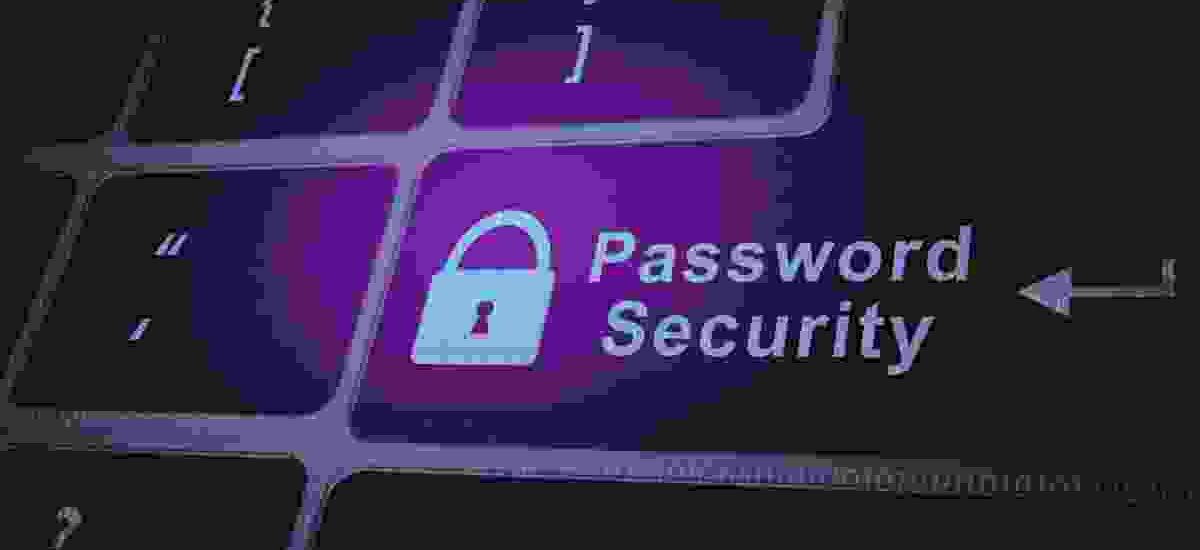In the digital world, passwords are like the locks that protect our personal safes.
Inside those safes?
Our photos, bank accounts, business data, and digital identities.
But here’s the bitter truth — every lock can be picked if you use the wrong kind of lock, or worse, if someone knows how it works.
That’s where password cracking comes in.
While movies often show hackers smashing keyboards and accessing secret files in seconds, the real process is a mix of math, algorithms, computing power, and psychology.
It’s less “Hollywood hacking” and more “digital detective work.”
In this blog, we’ll explore what password cracking really is, why it happens, how it’s done, and — most importantly — how you can protect yourself from it.
What Is Password Cracking?
At its core, password cracking is the process of recovering passwords from stored or transmitted data.
Hackers (and ethical hackers or penetration testers) use it to either gain unauthorized access or to test the strength of passwords in a system.
Most modern systems don’t store passwords directly. Instead, they store something called a hash — a scrambled version of your password created by a mathematical algorithm.
When you log in, your password is hashed again, and the system checks if the hash matches the stored one.
If it matches, you’re in.
But here’s the problem:
If someone gets access to that list of password hashes — say, from a data breach — they can attempt to reverse-engineer the hashes back into the original passwords.
That’s what we call cracking.
It’s not about typing random passwords into a login box. It’s about working offline, using algorithms and massive computational power to uncover what your password really is.
Why Hackers Crack Passwords
There are several motives behind password cracking — and they range from criminal intent to legitimate cybersecurity testing.
1. For unauthorized access
Hackers use cracked passwords to:
- Access personal accounts (email, social media, banking)
- Take over corporate systems
- Install malware or ransomware
- Steal sensitive information or trade secrets
2. For data resale
Cracked passwords are sold on the dark web in credential dumps.
Even worse, if your password is reused across sites, one cracked password can open multiple doors.
3. For penetration testing
Ethical hackers and cybersecurity professionals perform password cracking legally during penetration testing.
The goal isn’t to harm but to identify weak passwords within an organization — so they can be fixed before the real hackers exploit them.
4. For educational or forensic purposes
Cyber forensic experts often use password cracking tools to recover lost data or investigate crimes.
How Password Cracking Works
Let’s break it down simply.
When a hacker (or ethical hacker) tries to crack passwords, they use:
- A hash list (a dump of hashed passwords)
- A cracking tool (like Hashcat or John the Ripper)
- A strategy or technique (brute force, dictionary attack, etc.)
- Processing power (GPUs or cloud computing)
The process can be visualized as a race — a hacker’s computing power against your password’s complexity.
Now, let’s explore each password cracking technique in detail.
1. Brute Force Attack
Let’s start with the most basic — and the oldest — method.
A brute force attack tries every possible combination of characters until the correct password is found.
For example:
If the password is “dog,” the attacker’s system will try “a,” “b,” “c,” … until it reaches “dog.”
Sounds slow? It is — but with modern computing power, it’s shockingly effective on weak passwords.
A password like “1234” or “abcd” can be cracked in milliseconds.
But a long, complex one like “T@9pZx!u7W$” can take centuries — even for advanced systems.
Defense Against Brute Force
- Use long passwords (minimum 12 characters)
- Combine uppercase, lowercase, numbers, and special characters
- Enable account lockouts after failed attempts
- Use two-factor authentication (2FA)
Remember: every extra character makes your password exponentially harder to brute-force.
2. Dictionary Attack
Humans are predictable — and hackers know that.
A dictionary attack uses a prearranged list of likely passwords (like words from a dictionary, leaked passwords, or common phrases) and tests them one by one.
Common passwords like:
- “password123”
- “qwerty”
- “letmein”
- “iloveyou”
…are among the first to be tested.
Dictionary attacks work because people love memorable passwords — not secure ones.
Defense Against Dictionary Attacks
- Avoid real words, names, or common phrases
- Mix random characters with symbols
- Don’t use personal details (like birthdays or pet names)
- Use password managers to generate complex passwords
Even one special character in an unexpected place (“pa$$word123”) increases the cracking difficulty significantly.
3. Hybrid Attack
As the name suggests, a hybrid attack is a mix of a dictionary attack and brute force.
Hackers start with a list of known words and then apply variations — like adding numbers or symbols at the end.
Example:
If “password” is on the list, the tool might try:
- “password1”
- “password123”
- “Password!”
- “p@ssword”
This method works frighteningly well — because most people slightly “modify” their weak passwords thinking they’re smart.
Defense Against Hybrid Attacks
- Avoid simple modifications like “123” or “!” at the end
- Use passphrases instead (e.g., “Coffee#Rain#Laptop2025”)
- Regularly update your passwords
4. Rainbow Table Attack
This one’s a little more technical — but fascinating.
A rainbow table attack uses precomputed tables of password hashes.
Instead of guessing passwords and hashing them each time, the attacker simply looks up the hash in their table.
Think of it like having a massive phonebook:
- The “hash” is the phone number
- The “password” is the person’s name
If your hash matches one in the table, your password is found instantly.
While rainbow tables can be huge (hundreds of GBs), they save time — because computing hashes on the fly takes longer.
Defense Against Rainbow Table Attacks
- Use salted hashes — a random value added to your password before hashing.
This ensures every hash is unique, even for identical passwords. - Use modern hashing algorithms like bcrypt, Argon2, or scrypt.
- Avoid systems that store unsalted or plain MD5/SHA1 hashes — they’re outdated and vulnerable.
5. Credential Stuffing
Now, this one doesn’t even require cracking in the traditional sense.
Credential stuffing uses already leaked username-password pairs from other breaches to try and log in elsewhere.
If you use the same password for multiple accounts — a hacker can log in to your email, social media, or bank account, all without cracking anything.
Defense Against Credential Stuffing
- Never reuse passwords across platforms
- Use a password manager
- Enable 2FA wherever possible
- Monitor for data breaches on sites like Have I Been Pwned
Credential stuffing is the reason why password hygiene matters more than complexity alone.
6. Phishing-Assisted Cracking
While not a technical cracking method, phishing often assists cracking.
If an attacker can trick you into revealing your password through a fake login page or email — they don’t need to crack anything.
Hackers often combine phishing with brute force or dictionary attacks, targeting users who fall for fake emails.
Defense Against Phishing
- Always verify URLs before logging in
- Don’t click links in unsolicited emails
- Use browser password warnings
- Enable multi-factor authentication (so even if the password is stolen, it’s useless)
7. Keylogger-Based Cracking
Sometimes, hackers bypass password cracking completely by recording what you type using a keylogger.
Keyloggers are malicious programs that secretly track keystrokes, capturing passwords as you type them.
This attack targets human behavior, not algorithms.
Defense Against Keyloggers
- Keep your system updated
- Use antivirus and anti-malware tools
- Avoid downloading pirated software
- Use a virtual keyboard for sensitive logins if possible
- Never enter passwords on public or shared computers
Even the strongest password is useless if a keylogger has already seen it.
8. Social Engineering
One of the oldest and most effective “cracking” methods doesn’t involve any software at all — just psychology.
Social engineering manipulates people into revealing confidential information.
Examples:
- Pretending to be IT support asking for login details
- Guessing passwords based on personal details (birthday, pet name, etc.)
- Sending fake reset-password links
In many breaches, humans are the weakest link — not the technology.
Defense Against Social Engineering
- Be skeptical of unsolicited messages or calls
- Don’t share OTPs or passwords with anyone
- Educate employees regularly about phishing and social engineering tactics
9. Offline Cracking
Offline cracking happens when attackers steal hashed password databases and then crack them on their own systems.
It’s silent, invisible, and untraceable until it’s too late.
Using advanced GPU setups, hackers can try billions of passwords per second.
Defense Against Offline Cracking
- Use salted hashes
- Employ slow hashing algorithms (bcrypt, Argon2)
- Regularly update your password policies and monitor for unusual access attempts
10. Distributed Cracking
Distributed password cracking uses multiple computers — sometimes even thousands — to share the workload.
Cybercriminals often use botnets (infected computers) for this, turning regular users’ devices into silent password-cracking machines.
It’s the modern equivalent of a digital army working in the background.
Defense Against Distributed Cracking
- Keep your devices protected with firewalls and antivirus
- Avoid downloading suspicious files or clicking unknown links
- Organizations should implement rate-limiting and CAPTCHAs on login systems
11. Guessing (Yes, Still Works)
You’d be surprised how many accounts are still protected by:
- “password”
- “123456”
- “admin”
- “welcome”
Sometimes hackers don’t even need tools — just common sense and patience.
Defense
- Don’t use default passwords
- Change your passwords regularly
- Use unique, strong, and randomly generated passwords
Tools Commonly Used for Password Cracking
Here are some of the most popular password-cracking tools — used by both ethical hackers and cybercriminals:
- John the Ripper – A classic, open-source password cracker
- Hashcat – GPU-powered and one of the fastest password crackers available
- Hydra – Great for network login cracking
- Cain and Abel – Windows-based, often used for recovery
- Aircrack-ng – For cracking Wi-Fi passwords
- OphCrack – Specializes in Windows password cracking using rainbow tables
While these tools are powerful, ethical hackers use them responsibly — for testing, not exploitation.
How Long Does It Take to Crack a Password?
Here’s a shocking reality (based on research and average hardware speed):
| Password Type | Example | Estimated Time to Crack |
|---|---|---|
| 6 characters, lowercase only | “kitten” | Less than 1 second |
| 8 characters, mixed | “C@t12345” | 8 hours |
| 10 characters, mixed + symbols | “C@tL0ver!9” | 5 years |
| 12+ characters, complex | “P@ssword#2025!” | 30,000 years |
In short:
Length > Complexity.
A longer passphrase is more secure than a short complex one.
Best Practices to Stay Safe
Let’s be honest — no password is 100% uncrackable.
But you can make it practically impossible for attackers to crack within a lifetime.
Here’s how:
- ✅ Use password managers (like Bitwarden or 1Password)
- ✅ Turn on multi-factor authentication everywhere
- ✅ Avoid reusing passwords
- ✅ Update passwords regularly
- ✅ Monitor breach alerts
- ✅ Avoid typing passwords on public Wi-Fi or shared devices
- ✅ Use passphrases — a string of random, unrelated words (e.g., “BlueCoffee$Mountain2025”)
The Ethical Side: Why Cybersecurity Professionals Learn Cracking
You might be wondering — why would ethical hackers learn these techniques?
Because to defend, you must first think like an attacker.
By understanding how hackers crack passwords, cybersecurity professionals can:
- Identify weak password policies
- Strengthen authentication systems
- Educate users
- Build better encryption and defense mechanisms
So, when a cybersecurity analyst uses Hashcat or John the Ripper — it’s not for fun.
It’s to build a more secure digital world.
Final Thoughts
Password cracking isn’t just about technology — it’s a battle between human laziness and digital precision.
Most people still choose convenience over security, and that’s exactly what hackers rely on.
In the end, your password is like a lock — and the strength of your digital world depends on how strong that lock is.
If you remember one thing from this article, let it be this:
“Hackers don’t break in.
They log in — using your password.”
So make sure your password is not just a key…
Make it a fortress. 🔒






